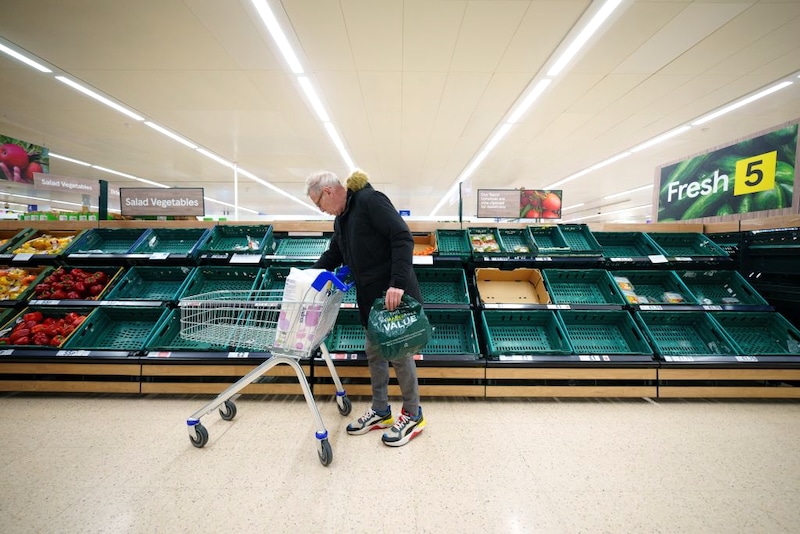This post was originally published on Eco Watch
In a new study, scientists analyzed UK crops and how the country’s agriculture could be affected by climate change and predicted what could be the top crops by 2080.
Led by the UK Centre for Ecology & Hydrology (UKCEH) in collaboration with the University of East Anglia (UEA), the study determined that a changing climate could mean that the UK will become more suitable for growing crops like soy, chickpeas, grapes, oranges and okra.
“Our climate is expected to change substantially over coming decades at a time when there will be rising demand for food due to population growth,” John Redhead, a spatial ecologist at UKCEH, said in a statement. “It is therefore essential that arable farming becomes more resilient; one possible solution is growing different crops that are more suited to the new local conditions.”
At the same time, the region could become less suitable to growing its current crops, including oats, wheat, onions and strawberries, meaning agriculture could face significant challenges and high costs to adapt to growing different crops.
Scientists explored how suitable 160 different crops — both currently grown in the UK and ones that would be new to the area — could be under two different scenarios: 2 degrees Celsius warming and 4 degrees Celsius warming compared to pre-industrial levels.
Under the 2-degree scenario, strawberries and onions would become less suitable to growing in the UK, while in the 4-degree scenario, strawberries, onions, wheat, oats, and apples could see declining suitability for growing in various parts of the UK.
Some current UK crops would become more suitable in both scenarios, including maize and broad beans. New crops that could become more suitable for growing include sorghum, okra, horseradish, chickpeas, soy beans and even avocado (in a 4-degree scenario). The scientists published their findings in the journal Climate Resilience and Sustainability.
As the study pointed out, introducing more crops and diversifying local agriculture could improve soil health and lead to improved natural pest and disease control; plus, high suitability for proteins like soy beans and chickpeas could reduce meat consumption and related emissions.
However, the team explained that introducing non-native crops could also lead to reverse effects, meaning these new plantings could lead to risks of new pests, disease outbreaks and negative impacts to pollinators. Transitioning to planting different crops would also come with high economic costs.
“Clearly, it’s unlikely to be feasible just to switch large-scale food production from Britain’s agricultural heartlands of southeastern England to Scotland, for example,” Redhead explained. “However, climate change is happening now, and its impacts will increase by 2080, so whatever action is taken will involve big challenges in terms of where our food comes from and the way our agricultural landscapes are managed.”
Already, extreme weather events linked to climate change are affecting agriculture in the UK and around the world. From October 2022 to March 2024, the UK recorded the wettest 18 months on record, as reported by Yale Climate Connections. According to UK’s House of Parliament, extreme levels of rainfall and flooding over the past two years could lead to decreased crop yields, including for staples like broccoli, cauliflower, potatoes and carrots, in 2025.
In February 2023, major supermarkets in the UK had to ration some produce, including tomatoes, lettuce and peppers, due to low supplies from extreme weather. The weather included higher-than-usual snow and rainfall in countries that UK sources some of its fruits and vegetables from in the winter months.
In fall 2024, the UK reported its second-worst harvest season ever recorded, with crops like wine grapes, wheat, barley, oats and oilseed rape all experiencing declining yields because of periods of flooding and drought throughout the year.
It’s uncertain what the future of farming in the UK will look like, but with impacts from climate change already affecting crops, the agriculture industry will need to consider ways to build resiliency in the face of these changes.
“Major changes to agricultural systems and diets can take decades to implement and so our long-term projections provide important information well ahead of time for farmers, supermarkets, researchers, policymakers and the public on the opportunities, challenges and trade-offs involved in adapting to the impacts of climate change,” said Rachel Warren, co-author of the study and professor at UEA’s Tyndall Centre for Climate Change Research.
The post Scientists Predict Top Crops of the Future for the UK Based on Climate Change appeared first on EcoWatch.





0 Comments